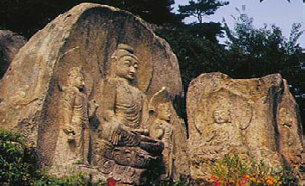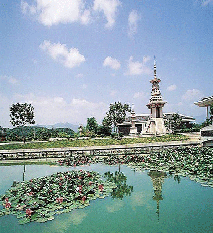Gyeongju National Park Preserving Cultural Relics.
The Gyeongju National Park in South Korea features amongst the 20 best in the country. It was declared as a National Park in the year 1968.
This Park is divided into several areas for the convenience of the visitors. Since this district is divided into seven sectors, the National Park is demarcated accordingly. This is Korea tourism at its best!

To the West like Gumisan and Danseoksan sections. In the heart of this park lie Hwarang, Seo-ok, Namsan and Sogemgang areas. Tohamsan lies in the east and on the coast of Sea of Japan lies Daebon.
The Namsan district has Buddhist statues, stone Pagodas and nearly 100 temples. The Poseokjeong Pavillion which was built by the King as a venue for having feasts can also be found here.
The Daebon District is the location for King Munmu's tomb. A three storey stone Pagoda, Gameunsaji was built as a mark of appraisal of the great King and is also located here.

The Tohamsan District is magnet for tourism. This area houses the Bulguksa Temple which was built during the glorious ruling days of King Beopheung of the Silla Dynasty. Two beautiful pagodas, the Seokga Pagoda and the Dabo Pagoda are also located in the same district. Both the pagodas enjoy national and international fame.
The well known Korean Buddhist sanctuary, Seokguram with its timeless engravings lies in the east side of Tohamsan.
The downtown area here has more monuments and places to expore. The Cheomseongdae Observatory built during the reign of Queen Seon Deok is one such memorial.
Places to visit includes the Anapji Pond and the Gyerim Forest. Gyerim was initially used as the country name for Silla. This National Park is dedicated to preserve the cultural relics of the Silla Dynasty.
Gyeongju Back to National Parks

National Parks
gayasan
gyeongju
hallyeohaesang
hangyeryeong
jirisan
juwangsan
naejangsan
songnisan
upo_wetland




